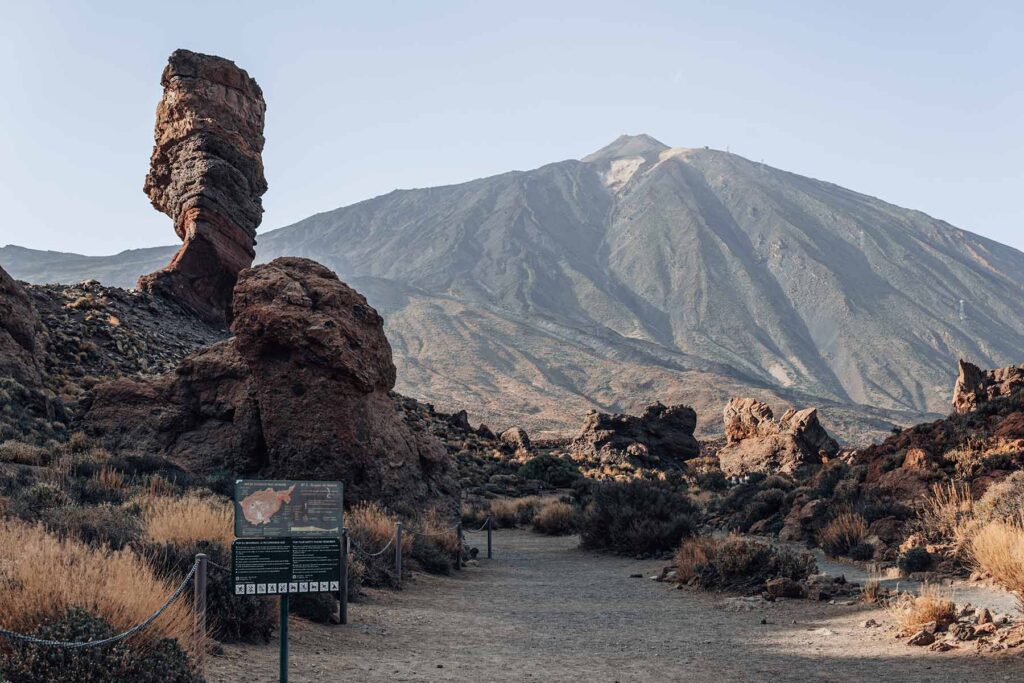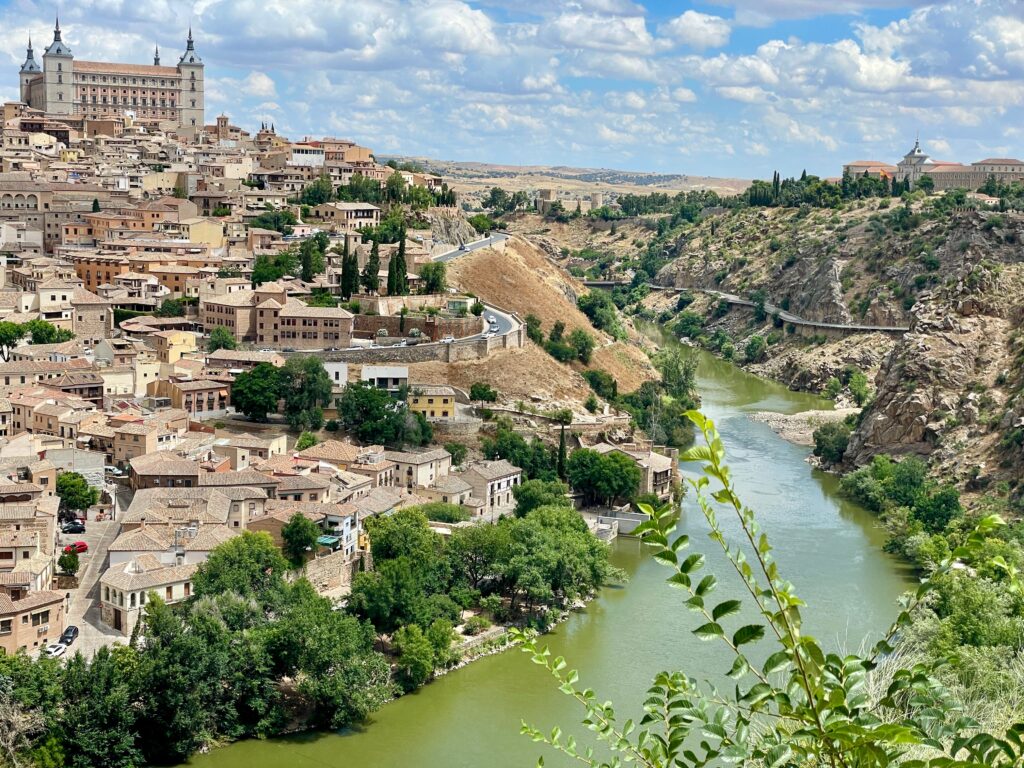Teide National Park in Tenerife is one of Spain’s most iconic destinations. Boasting the highest peak in the country—Mount Teide at 3,718 meters—this remarkable volcanic landscape offers an unforgettable experience to travelers. Whether you want to ride the famous cable car, hike through lunar-like terrain, or stargaze beneath some of the clearest skies in Europe, this UNESCO World Heritage Site has it all. In this guide, we’ll explore the top things to do, the best times to visit, and how to plan an unforgettable trip to Teide National Park.

Discovering Teide National Park in Tenerife
The Pride of the Canary Islands
Teide National Park sits in the center of the island of Tenerife, the largest of Spain’s Canary Islands. The park’s main attraction—Mount Teide—draws thousands of visitors each year who are eager to witness its dramatic volcanic landscapes. It is a UNESCO World Heritage Site, recognized for its unique geology and ecological significance. Many travelers consider it one of the most breathtaking natural wonders in Europe.
Unique Volcanic Landscape
Walking through Teide National Park feels like stepping onto another planet. The landscape features vast lava fields, ancient craters, and rugged rock formations created by centuries of volcanic activity. These geological formations not only captivate visitors but also serve as a living laboratory for scientists studying the Earth’s volcanic processes. The area around Mount Teide is home to a variety of endemic plant species that have adapted to the high-altitude environment.
Teide National Park Travel Analysis
Why Teide National Park Is a Must-Visit
Highest Peak in Spain: Rising to 3,718 meters, Mount Teide is the tallest point in the country, offering stunning views from its summit.
UNESCO World Heritage Site: Recognized for its unique geological and ecological importance.
Varied Activities: Hiking trails, a cable car, stargazing excursions, and visitor centers cater to all types of travelers.
Year-Round Destination: Thanks to Tenerife’s mild climate, you can visit almost any time of the year.
Ideal for Nature Lovers and Adventure Enthusiasts
Teide National Park appeals to people who enjoy immersive outdoor experiences. If you’re a photographer, you’ll love capturing the dramatic contrasts of volcanic rock against a bright blue sky. Adventure travelers can explore hiking trails of varying difficulty, while casual visitors can opt for the cable car to experience the park without extensive physical exertion. Stargazers also consider Mount Teide a premier location for observing the night sky due to minimal light pollution.
Boosting Your SEO Strategy With Teide National Park Content
If you plan on creating travel-related content, Teide National Park is a goldmine of SEO opportunities. Keywords such as “Mount Teide hiking,” “Teide cable car,” “Tenerife travel guide,” and “UNESCO World Heritage Sites in Spain” can significantly improve search engine visibility. Incorporating local terms like “Las Cañadas del Teide” or “El Portillo Visitor Center” may also attract niche travelers researching specific details.
Best Time to Visit Teide National Park
Weather and Climate
Tenerife’s climate is famous for being comfortable year-round. However, temperatures at higher altitudes can be considerably cooler, especially in winter. Snow on the summit isn’t unusual from December to February. Daytime temperatures at lower altitudes can still be warm during this period, making layering important when exploring the park.
Spring (March–May): Mild weather, fewer crowds, and blooming flora.
Summer (June–August): Warmer temperatures but more tourists; book accommodations and excursions in advance.
Autumn (September–November): Pleasant temperatures and thinner crowds, making it ideal for hiking.
Winter (December–February): Clear skies perfect for stargazing, but expect cooler temperatures and possible snowfall on the summit.
Peak Seasons vs. Off-Peak Travel
Summer is the high season in Tenerife, making Teide National Park busier. If you prefer tranquility, consider visiting in late spring or early autumn. Shoulder seasons often come with moderate weather, smaller crowds, and lower accommodation costs. Winter can also be a good time to visit for unique photo opportunities of snow-capped volcanic landscapes.
Getting to Teide National Park
From Tenerife’s Major Tourist Resorts
Most visitors stay in popular resort areas like Costa Adeje, Playa de las Américas, or Puerto de la Cruz before heading to Teide National Park. You can rent a car, use public buses, or join an organized tour. The drive from southern resorts takes about an hour, while traveling from northern areas can take slightly longer.
Renting a Car
Renting a car offers the most flexibility. Tenerife’s roads are well-maintained, and the scenic drive up to Mount Teide is an attraction in itself. You’ll pass through pine forests before emerging into the otherworldly volcanic landscape. Be mindful of potential parking limitations near the cable car station, especially during peak travel times.
Public Transportation
Tenerife’s bus company, TITSA, provides services that connect major towns to the park. Though reliable, the schedules can be limited, so planning in advance is essential. If you’re looking for an affordable option and have plenty of time, taking the bus can be a rewarding way to experience the local culture.
Things to Do in Teide National Park
Ride the Teide Cable Car
The Teide Cable Car (Teleférico del Teide) is one of the park’s most popular attractions. It transports passengers from 2,356 meters to La Rambleta, situated at 3,555 meters in under ten minutes. From there, you can enjoy panoramic views across the volcanic landscape. If you aim to reach the very summit, you’ll need a special hiking permit to cover the final 200-meter ascent via the Telesforo Bravo Trail. These permits are limited and can be booked online.
Tips for the Cable Car Experience
Book Tickets in Advance: High demand often leads to sold-out days.
Check the Weather: Strong winds or bad weather can suspend operations.
Arrive Early: Avoid peak midday crowds, especially during summer.
Hiking in Teide National Park
Teide National Park boasts numerous hiking routes that cater to different fitness levels. If you’re a seasoned hiker, summiting Mount Teide can be a rewarding challenge. However, less strenuous walks are also available, such as the Roques de García trail, which showcases unique rock formations.
Top Hiking Trails
Telesforo Bravo Trail: Leads to the highest point of Mount Teide; requires a permit.
Roques de García: A moderate loop trail near the Las Cañadas area.
Siete Cañadas: A long but relatively flat path showcasing the vastness of the caldera.
Stargazing and Night Tours
Mount Teide is renowned for its exceptional stargazing conditions. Low light pollution, high altitude, and clear skies make it an astronomer’s dream. Several guided tours offer telescope viewings and expert commentary on constellations. This immersive activity provides a unique perspective on Tenerife’s night sky and often includes sunset views over the Atlantic Ocean.
Visit the Park’s Visitor Centers
There are two primary visitor centers: El Portillo and the Cañada Blanca Visitor Center. Both provide interactive displays, geological exhibits, and detailed information on local flora and fauna. Stopping by these centers is an excellent way to deepen your understanding of the park’s volcanic origins.
Accommodation and Dining Near Teide National Park
Overnight Stays in the Park
The Parador de las Cañadas del Teide is the only hotel located within the park’s boundaries. It offers rooms with incredible views, along with a restaurant serving Canarian specialties. Staying here allows you to wake up to the majestic sight of Mount Teide and gives you early-morning access to hiking trails.
Nearby Towns and Resorts
If you’re seeking a wider range of accommodations, consider staying in towns like La Orotava, Puerto de la Cruz, or Vilaflor. These areas have hotels, guesthouses, and vacation rentals to suit every budget. Many visitors choose to stay in the south of Tenerife—such as Costa Adeje or Los Cristianos—and make a day trip to Teide National Park.
Local Cuisine
When dining in or near the park, sample the local Canarian cuisine. Papas arrugadas (wrinkled potatoes) with mojo sauce is a favorite among locals and tourists alike. Other dishes might include grilled meats, fish, and goat cheese specialties. If you’re stopping in a nearby town, don’t miss the chance to try traditional Tenerife wines.
Practical Tips for Visiting Teide National Park
Permits and Reservations: Book your permit to hike to the summit in advance, as spots fill quickly.
Hydration: Even on cooler days, the high altitude can dehydrate you quickly. Carry adequate water.
Sun Protection: High altitudes mean stronger UV rays, so sunscreen and sunglasses are essential.
Layer Your Clothing: Temperatures can vary between lower elevations and the summit.
Footwear: Wear sturdy shoes if you plan on hiking.
Check Park Regulations: Respect the local environment by staying on designated trails.
Frequently Asked Questions (FAQs)
1. Where Is Teide National Park Located?
Teide National Park is located in the center of Tenerife, the largest of the Canary Islands in Spain. The park is easily accessible by car or organized tours from major resort areas like Costa Adeje or Puerto de la Cruz.
2. What Is the Best Time to Visit Teide National Park?
You can visit Teide National Park any time of the year, thanks to Tenerife’s mild climate. Spring and autumn often provide pleasant temperatures and fewer crowds, while winter offers unique views of possible snowfall at the summit.
3. How High Is Mount Teide?
Mount Teide stands at 3,718 meters above sea level, making it the highest peak in Spain. If you plan to climb all the way to the summit, ensure you have the necessary hiking permit.
4. Is a Permit Required for Hiking to the Summit?
Yes. A special permit is required for the final 200-meter stretch from La Rambleta to the summit. You can obtain it online, but availability is often limited, so plan ahead.
5. How Do I Get to Teide National Park?
Travelers typically reach the park by renting a car, taking a public bus, or joining a guided tour. Driving offers flexibility and scenic views, while buses are budget-friendly but less frequent.
6. Can I Take the Cable Car All Year Round?
Yes. The cable car operates year-round, weather permitting. Strong winds or adverse weather conditions can suspend operations, so it’s wise to check online for updates before your visit.
7. What Should I Wear When Visiting Teide National Park?
Wear sturdy footwear for hiking, and bring layers because temperatures can fluctuate significantly. Sunscreen, sunglasses, and hats are also recommended due to strong UV exposure at high altitudes.
8. Are There Restaurants or Cafés in the Park?
The Parador de las Cañadas del Teide has an on-site restaurant. You can also find small cafés in visitor centers or picnic areas. Bring snacks if you’re planning a long hike, as dining facilities are limited.
9. Is Teide National Park Family-Friendly?
Yes. Families can explore shorter hikes, enjoy cable car rides, and visit the visitor centers. The park’s unique landscapes often fascinate children and adults alike.
10. Can I Stargaze in Teide National Park?
Absolutely. Teide National Park is world-renowned for its clear skies and minimal light pollution. Several tour operators offer nighttime stargazing packages and telescope viewings.
Final Thoughts on Teide National Park
Teide National Park is a gem within the Canary Islands, offering diverse activities ranging from peaceful nature walks to exhilarating summit hikes. Its dramatic volcanic scenery, intriguing wildlife, and stunning night skies create an unforgettable travel experience. Whether you’re a casual sightseer looking for panoramic views or an avid adventurer ready to tackle Spain’s highest peak, you’ll find plenty of reasons to fall in love with this UNESCO World Heritage Site.
Proper planning, including securing hiking permits and booking the cable car in advance, is crucial to ensure a smooth journey. Choose the right time of year to balance weather conditions and crowd levels. Don’t forget to explore the local cuisine and cultural experiences that make Tenerife a well-rounded destination. By following these tips, you’ll be all set to embark on a once-in-a-lifetime adventure in Teide National Park.

